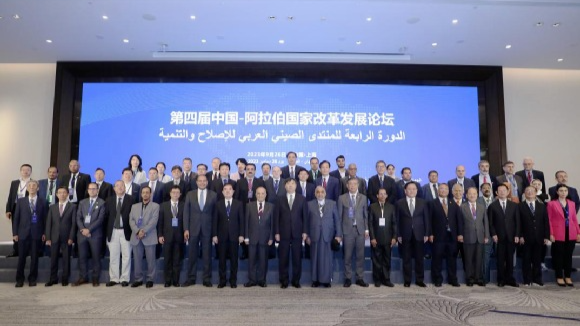The Race To Fix Air-Traffic Control: Addressing The "I Don't Know Where You Are" Problem

Table of Contents
The phrase "I don't know where you are" is a chilling prospect in air traffic control (ATC). Current air traffic management systems, while largely effective, face increasing limitations in accurately tracking all aircraft under all conditions. This poses a significant risk to aviation safety. This article explores the ongoing race to modernize air traffic control, focusing on technologies designed to eliminate this critical blind spot and enhance aviation safety worldwide. We'll examine the shortcomings of current systems, the emerging technologies offering solutions, and the challenges involved in their implementation.
<h2>The Limitations of Current Air Traffic Control Systems</h2>
For decades, radar technology has been the cornerstone of air traffic control. However, this technology is not without its limitations, particularly in the face of escalating air traffic volume and the rise of new aircraft types.
<h3>Radar Technology's Shortcomings</h3>
Radar, while crucial for ATC, suffers from several inherent limitations that contribute to the "I don't know where you are" problem:
- Limited range in mountainous or heavily populated areas: Radar signals can be blocked by terrain or large structures, creating gaps in coverage.
- Susceptibility to ground clutter and weather interference: Rain, snow, and other atmospheric conditions can significantly degrade radar performance, masking aircraft signals.
- Difficulty tracking small, unmanned aircraft: Smaller aircraft, including drones and general aviation aircraft, often present weaker radar returns, making them harder to detect and track accurately.
These limitations create significant "blind spots" in air traffic monitoring, increasing the risk of mid-air collisions and compromising overall air safety. The inability to precisely track all aircraft in all conditions undermines the fundamental goal of safe and efficient airspace management.
<h3>The Growing Volume of Air Traffic</h3>
The exponential growth in air travel globally places immense pressure on existing ATC infrastructure. The rise of drones, general aviation, and the increasing density of commercial air traffic further exacerbates the situation:
- Increased congestion in airspace: More aircraft in the sky means a higher likelihood of near misses and potential conflicts.
- Higher risk of mid-air collisions: The increased density makes it more challenging for air traffic controllers to maintain safe separation between aircraft.
- Challenges in managing diverse aircraft types: Integrating various aircraft types—from large commercial jets to small drones—requires sophisticated tracking and management capabilities that traditional radar systems may struggle to provide.
The strain on radar systems necessitates the adoption of more robust and comprehensive aircraft tracking solutions.
<h2>Emerging Technologies for Enhanced Aircraft Tracking</h2>
Fortunately, several advanced technologies are emerging to address the limitations of current ATC systems and improve flight tracking precision.
<h3>Automatic Dependent Surveillance-Broadcast (ADS-B)</h3>
ADS-B is a game-changer in aircraft tracking. It leverages GPS and satellite technology to provide precise and continuous position updates from aircraft:
- Increased accuracy and range: ADS-B offers significantly improved accuracy compared to traditional radar, with extended range capabilities.
- Provides continuous position updates: Unlike radar, which provides snapshots of aircraft positions, ADS-B offers real-time, continuous updates.
- Reduces reliance on ground-based radar: ADS-B minimizes dependence on ground-based radar infrastructure, enhancing coverage in remote areas.
However, the widespread adoption of ADS-B faces challenges such as the cost of equipping aircraft with ADS-B transponders and ensuring adequate satellite coverage globally.
<h3>Space-Based Tracking Systems</h3>
Satellite-based tracking offers a compelling solution for global coverage and improved position awareness, especially in areas with limited ground-based infrastructure:
- Global coverage: Satellites can track aircraft anywhere on Earth, eliminating geographical limitations.
- Improved surveillance of remote areas: This is crucial for oceanic and polar flights, where ground-based radar coverage is often sparse or nonexistent.
- Potential for enhanced safety in oceanic and polar regions: Satellite tracking significantly enhances safety in these challenging environments.
Constellations like Iridium already play a role, and future space-based systems promise even more comprehensive coverage and improved data accuracy.
<h3>NextGen Air Transportation System (USA) and Similar Global Initiatives</h3>
Modernization programs like the NextGen Air Transportation System in the USA and similar initiatives worldwide aim to integrate these new technologies into a comprehensive air traffic management framework:
- Data sharing between ATC centers: Improved data sharing streamlines information flow between different air traffic control centers.
- Improved communication systems: More advanced communication systems facilitate quicker and more efficient communication between controllers and pilots.
- Enhanced efficiency in airspace management: The integration of new technologies improves overall efficiency in airspace management.
These programs are crucial in addressing the "I don't know where you are" problem by integrating advanced tracking technologies and improving data analysis capabilities.
<h2>Addressing the Challenges of Implementing New Technologies</h2>
Despite the promise of these advanced technologies, several challenges hinder their widespread implementation.
<h3>Cost of Implementation and Upgrades</h3>
The financial implications of equipping aircraft with ADS-B transponders and upgrading ground infrastructure represent a major hurdle:
- Financial burdens on airlines: The cost of retrofitting existing aircraft and purchasing new ADS-B equipment can be substantial.
- Need for government support and incentives: Government funding and incentives are often necessary to encourage widespread adoption.
- Potential for phased rollout strategies: A phased approach may be necessary to manage costs and ensure a smooth transition.
Public-private partnerships and strategic funding models are crucial for overcoming this financial barrier.
<h3>Interoperability and Standardization</h3>
Ensuring seamless data exchange and compatibility between different systems and across national borders is vital for effective implementation:
- Need for global standards: International collaboration is essential to establish and maintain consistent standards.
- Collaborative efforts between nations: International cooperation is required to avoid fragmentation and ensure interoperability.
- Data security and privacy concerns: Addressing data security and privacy issues is crucial to build trust and ensure responsible data handling.
International collaboration and the development of standardized communication protocols are key to successful global implementation.
<h2>Conclusion</h2>
The "I don't know where you are" problem in air traffic control is a significant safety concern, but technological advancements like ADS-B and satellite-based tracking offer viable solutions. While challenges remain in terms of cost, implementation, and interoperability, the global effort to modernize air traffic control is accelerating, promising enhanced safety and efficiency in the skies. The future of air travel depends on our collective commitment to solving this crucial issue and investing in the technology needed for reliable aircraft tracking and effective air traffic management. Let's continue the race to fix air traffic control and ensure a safer future for air travel, eliminating the risk of the “I don’t know where you are” scenario once and for all.

Featured Posts
-
 Steelers Insider On George Pickens Future Whats Next For The Young Wr
May 07, 2025
Steelers Insider On George Pickens Future Whats Next For The Young Wr
May 07, 2025 -
 Draymond Green And Steph Curry The Story Behind The Night Night Celebration
May 07, 2025
Draymond Green And Steph Curry The Story Behind The Night Night Celebration
May 07, 2025 -
 Jenna Ortegas Scream 7 Departure The Official Explanation
May 07, 2025
Jenna Ortegas Scream 7 Departure The Official Explanation
May 07, 2025 -
 Jenna Ortegas Rise To Horror Stardom Analyzing Her Scream Queen Potential
May 07, 2025
Jenna Ortegas Rise To Horror Stardom Analyzing Her Scream Queen Potential
May 07, 2025 -
 Alkhtwt Aljwyt Aljnwbyt Alsynyt W Laram Yezzan Alrbt Aljwy Byn Afryqya Walsyn
May 07, 2025
Alkhtwt Aljwyt Aljnwbyt Alsynyt W Laram Yezzan Alrbt Aljwy Byn Afryqya Walsyn
May 07, 2025
